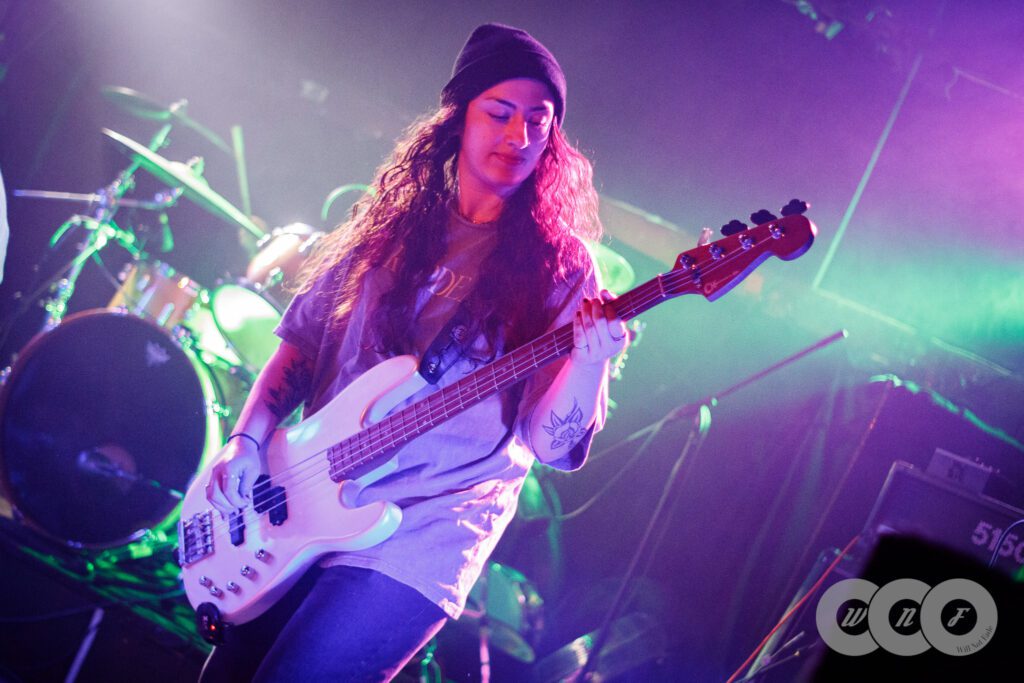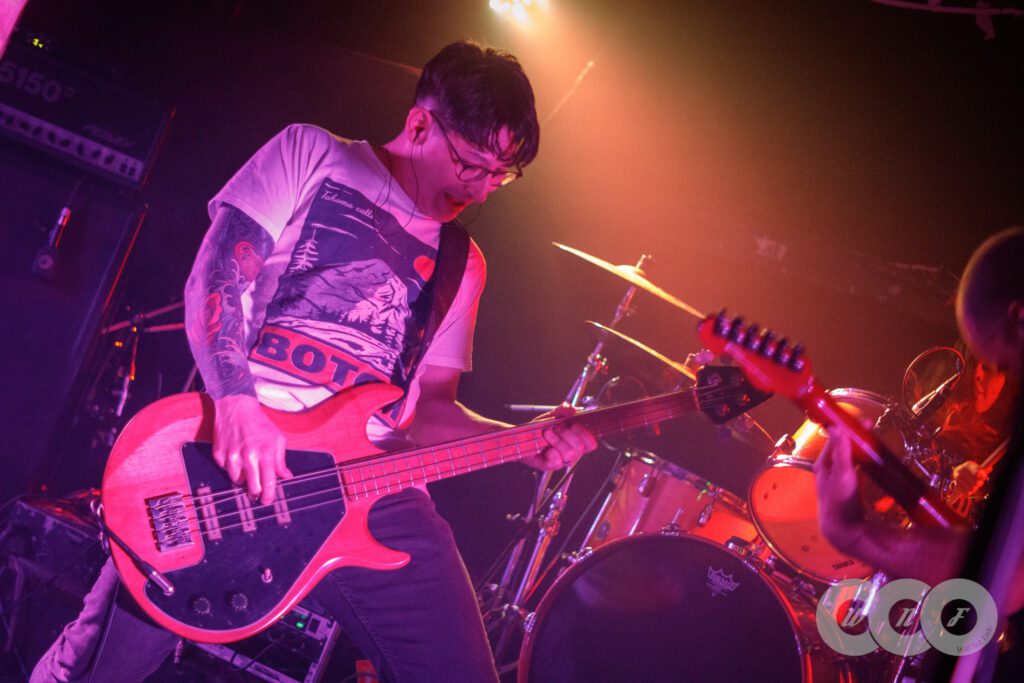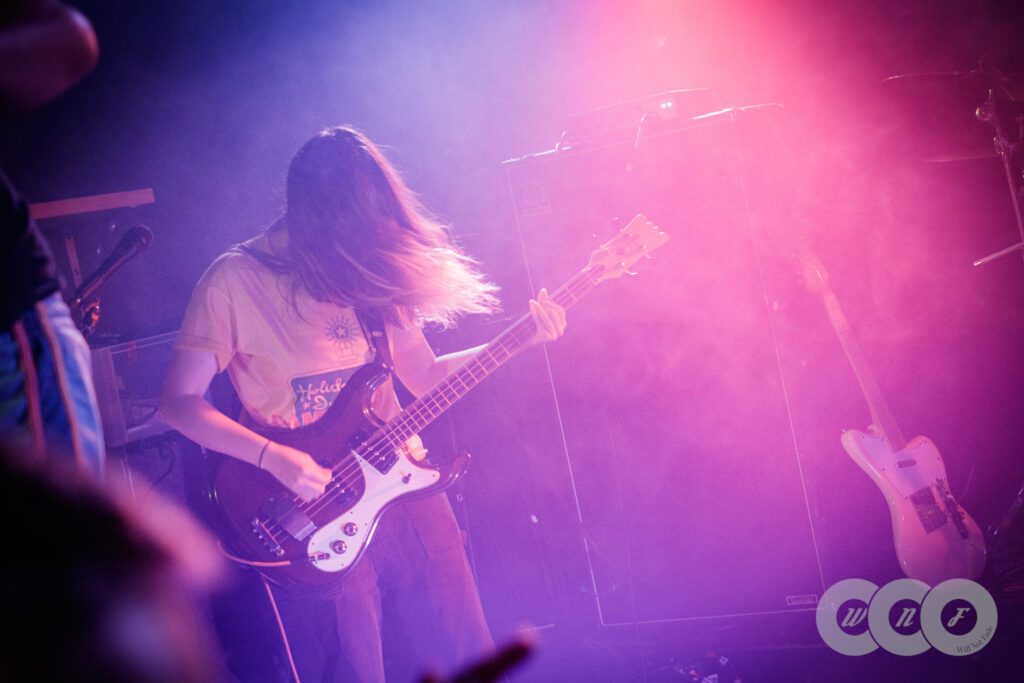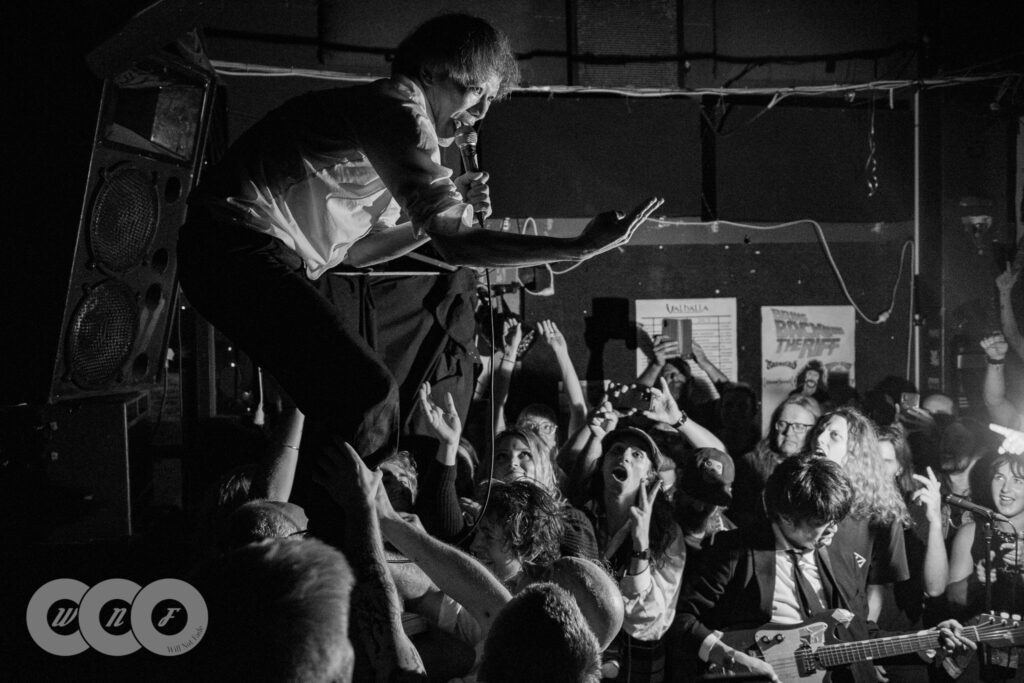distance
w/ Serpent Dream, Sheeps, FVKVSHIMA
Valhalla, Wellington
Friday 6 June 2025

I have nothing but love for Valhalla, the treasured venue that I consider my musical home. That said, it has a notoriously sticky floor a lot of the time. Opening act Serpent Dream was playing and I was shocked to see roughly a dozen people sitting down to enjoy their tunes. It was a suitable reaction to the lovely music, but I’ve always been of the mindset that making any more than the bare minimum of contact with the Valhalla floor was inadvisable. They were a duo: Josh on guitar and some vocals, and Kelda on violin. Kelda had contributed violin to distance recordings in past and they’d always discussed playing together at some point. I’d not encountered Serpent Dream beforehand, but I came away a fan. The ethereal music left us spellbound and paved the way for a great night ahead.


Sheeps have been a mainstay in the local music scene for some time now. I remember first seeing them play when they opened for Hiboux at San Fran during their Migrations tour. I know that they bonded with distance at Twisted Frequency festival one year that they’d both played, and had been tight ever since.
Their drummer Thomas has been living in Auckland for a few years, and it hasn’t always been worth flying him down to Wellington for gigs. Pete from FVKVSHIMA had been filling in here and there, opening for Toe, and playing Newtown Festival and Cubadupa. It was nice to see Thomas back on the drum throne for this gig.
Sheeps play a interesting brand of rock that draws from the lighter side of prog and post rock, while still leaving an impression. Three guitarists play intricate melodies and frontman Dean Blackwell delivers soaring vocals that remind me of Radiohead.

[Sheeps are currently raising funds to press their album Working the Machine on vinyl. Here is a link if you’re interested: https://givealittle.co.nz/cause/getworkingthemachinepressedtovinyl]

FVKVSHIMA and distance have enjoyed a long friendship. I think they both opened for Spook the Horses years ago, which was FVKVSHIMA’s first show. Sam Butler filled in on bass one time – which is no small undertaking, considering how technical FVKVSHIMA’s music is. And the bands have played together many times. They will also be playing together in Christchurch next weekend, at distance’s final show.
I’m a big fan of FVKVSHIMA, and was honored that they were happy to work with me to premiere their debut single “Kuato” last year in May. They have immense stage presence and irresistible djenty grooves. Thematically, they draw heavy influence from from post-apocalyptic and sci-fi canon. Musically, I liken them to Meshuggah and Killing Joke.


Check out their new single “The End is Nigh“, released a few days ago.

It’s a sad moment. distance are one of the best bands to arise from the NZ music scene in the past decade. It started out as a solo lockdown project from Sam Butler, but before long became a fully fledged band. They’ve easily the best actively gigging post-rock band in the country for a lot of their tenure.
We last saw them touring with Australian band Myriad Drone in February. Myriad Drone were about to release their newest record, and were selling it before the official release dates at these shows. distance had an album in the works too, and had planned on releasing it to coincide with that tour, but some delays meant that the album wasn’t ready in time.

It’s a shame, because that album is a ripper. so as not to forget (released March 28, 2025) is a masterpiece. It’s dynamic and nuanced and shows clear growth in songwriting abilities. It also clearly draws from the trio’s metal roots, with plenty of big riffs and blastbeats that are both tasty and tasteful. Without question my favourite album released so far this year, and I feel like I’m still barely scratching the surface with discovering how much it has to offer.
So yeah, it’s sad that such an amazing band is calling it a day, and that they didn’t have much to to showcase their incredible new record. But they’re ending on a high note. Sam Butler is moving to Europe. Exciting new adventures await. A shame that this spells the end of a great band, but I have no doubt we will see more from him at some point in the future.
I haven’t even touched on their set. It was great. Many friends had come together for the farewell, and you could feel a nice energy in the room. A mix of hope and support, celebrating a band that we were proud to be friends with, albeit tinged with a bittersweet sadness.

Sam Austin has a really understated power in his presence, standing strong with a wide stance, holding his big bass guitar and delivering thunderous tones. As a drummer, I always love seeing Levi play. He’s a metal drummer in gazillion bands and I love seeing how he tastefully incorporates his metal chops into a style that doesn’t always ask for it. He has a deft ability to push the music in creative ways.
And then we have Sam Butler. The sonic wizard. distance has always been his project. He looked the part, his long curls hiding his face as he did his best shoegaze impression. But now and again you’d get a peek at his smile. He’s humble and a bit shy on stage. He made a few slip ups pressing the wrong buttons on his pedal board, and he sheepishly confessed that he’d made a terrible error choosing to take his shoes off and play in his socks [see prior entry for Valhalla floor: very sticky and gross]. But we all know that he’s incredible and we love him and his band and all the great contributions they’ve made to the music community as a band and as individuals.
It was fantastic. New lighting that I hadn’t seen at Valhalla before helped set the mood. Kelda from Serpent Dream jumped up onstage to add violin to one song, just as Toby has added sax at distance gigs in the past. The new songs are awesome and the older tracks wrapped themselves with warm familiarity. An end of an era for sure.

Tickets for distance’s final show in Christchurch next Saturday, with FVKVSHIMA, Ragweed and No Broadcast: https://www.undertheradar.co.nz/gig/96239/Distance-Final-Show—w/-Fvkvshima,-Ragweed-and-No-Broadcast.utr
distance links: https://lnk.bio/distancenz
Words and photos by Joseph James

































